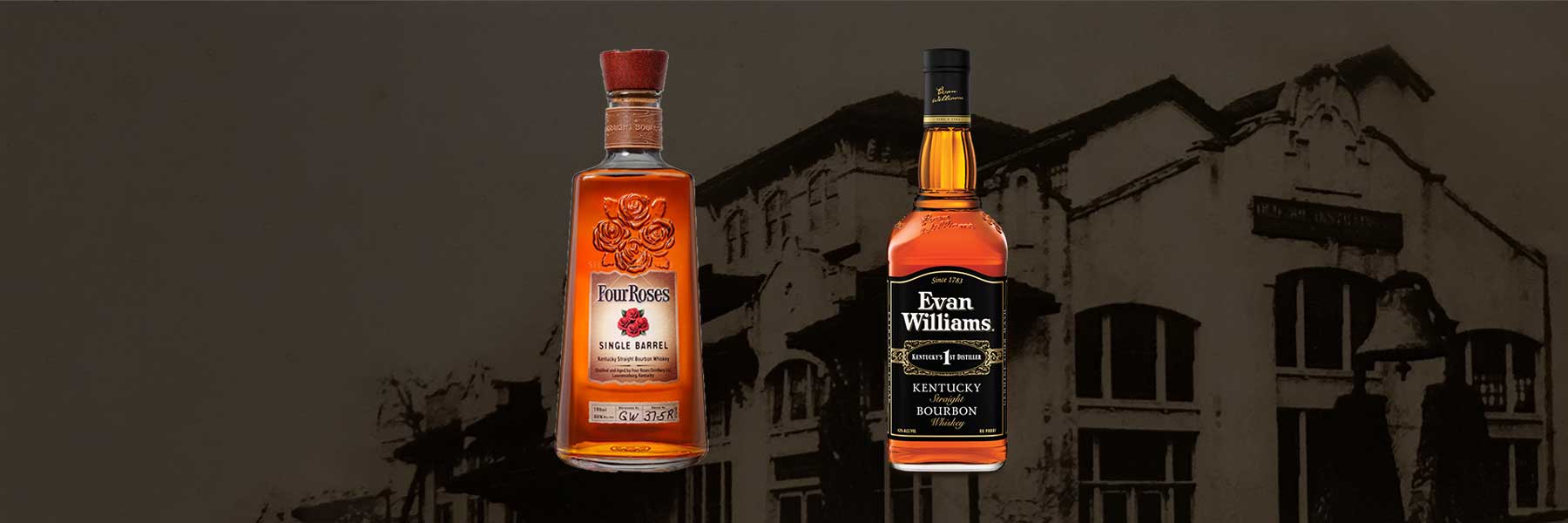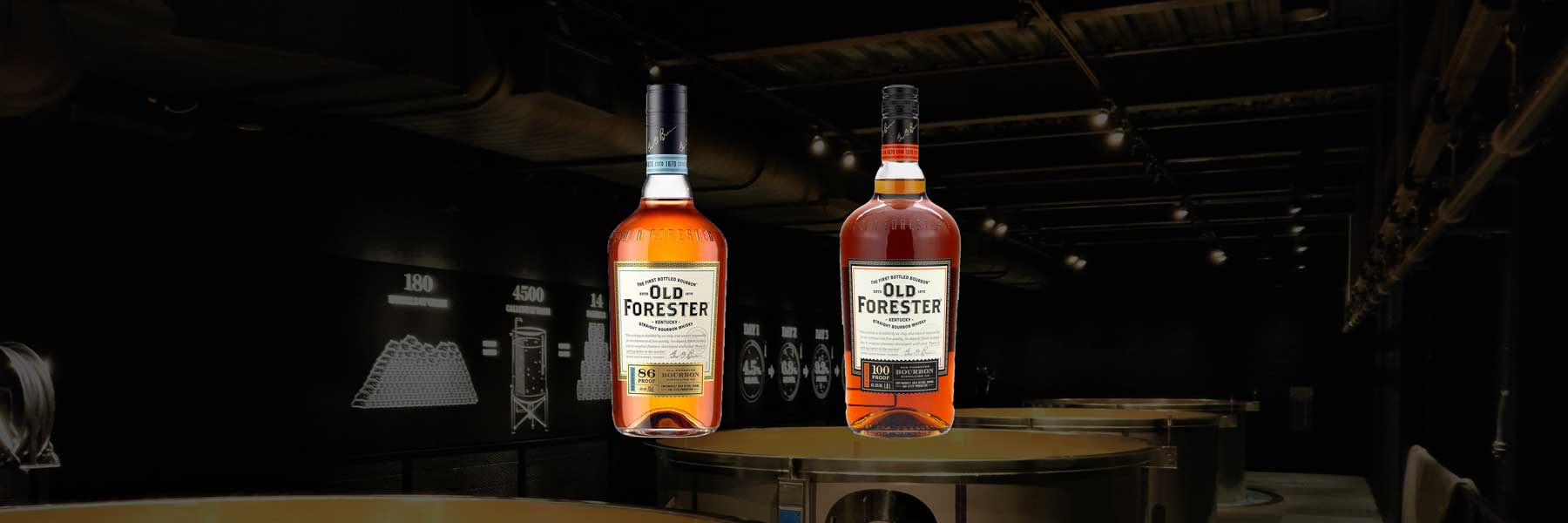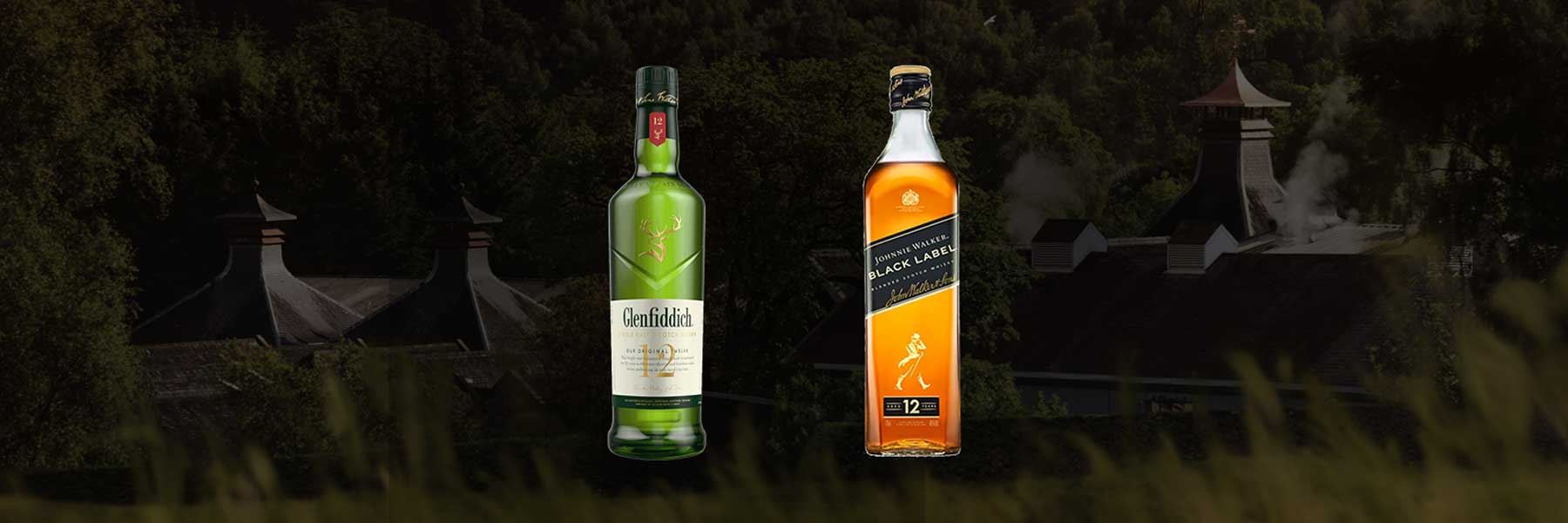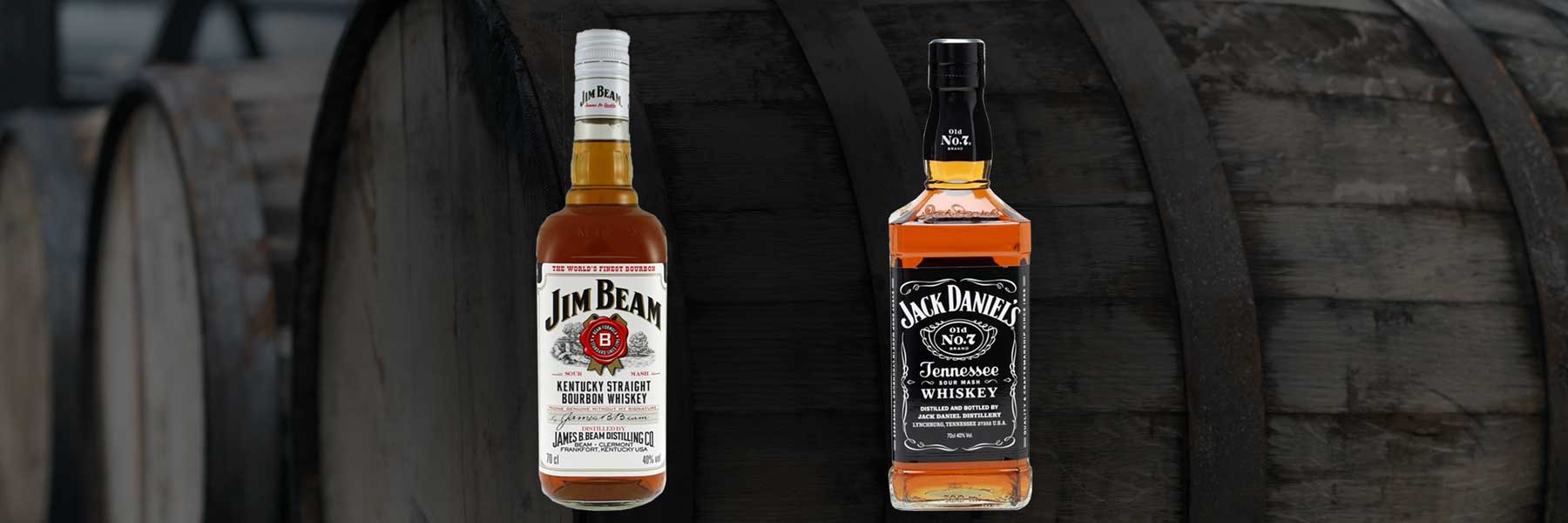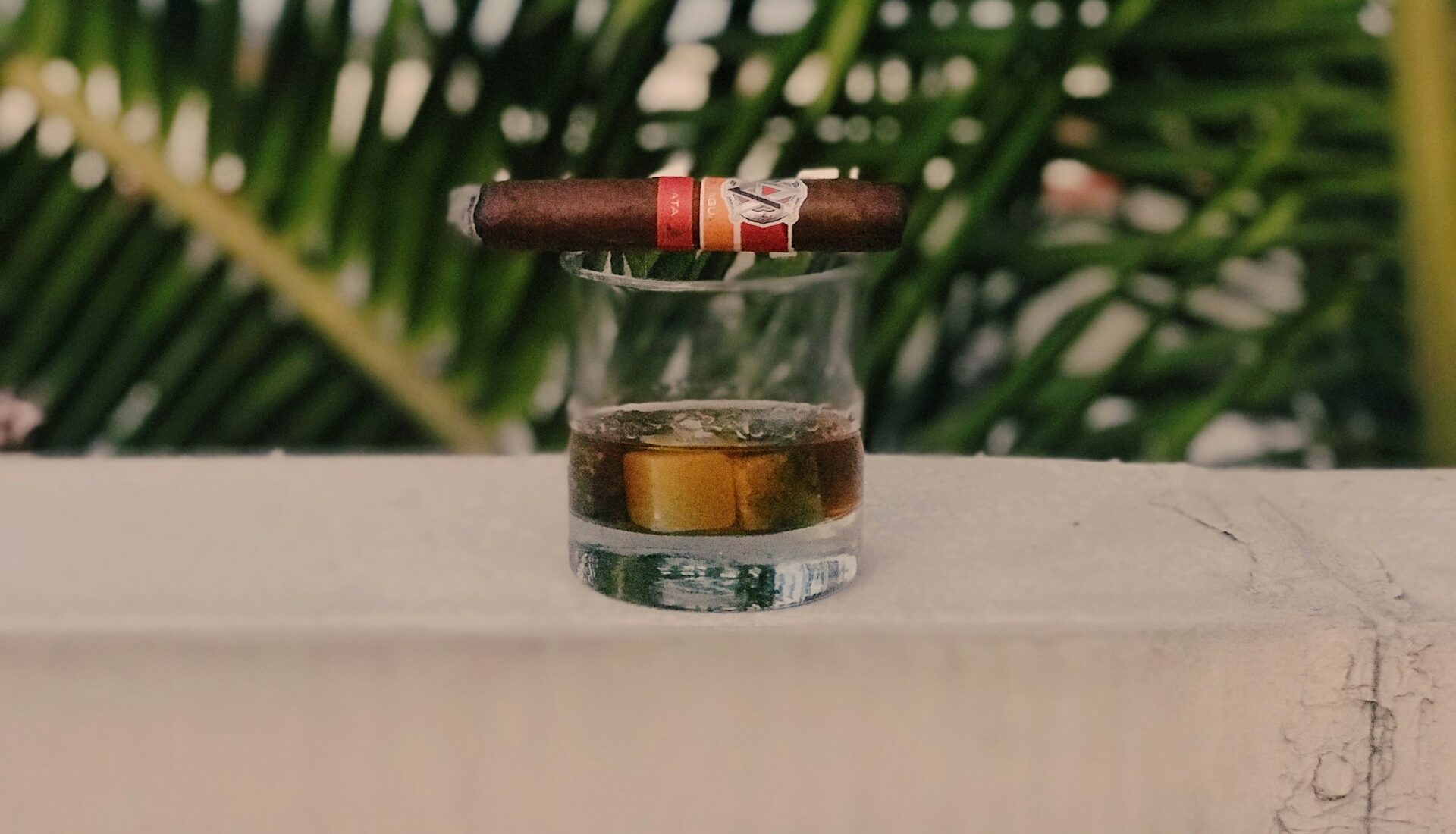Laphroaig 10 vs Quarter cask | A Comprehensive Review
Laphroaig 10 vs Quarter Cask. I wouldn’t be the first person to compare these two whiskies, but I can guarantee you that my review will certainly stand among the most in-depth you will read.
After my experiences with the two variations, I came to realise that it’s pretty difficult not to draw comparisons between the two to see how they stack up against each other.
Starting with the Laphroaig 10, I’ll tell you not to expect to like it right off the bat. It’s pretty intense and flavourful, and I think it’s more suited to a persistent drinker than someone a bit less experienced with this kind of whisky. That being said, once you get into the swing of things and start to appreciate it, you will probably never go back.
Sure, it’s not the nicest-smelling whisky on the market, and much of that comes from the burned rubber foot that it puts forward. This is complemented by oak, espresso coffee, caramel, and smoke.
As the name implies, Laphroaig 10 has been aged for 10 years, using a combination of sherry and bourbon tasks. Interestingly enough, it took the gold medal during the San Francisco World Spirits Competition in 2019.
If you should check out Jim Murray’s Whisky Bible, you will find it being named the best single malt scotch in the 10 years and under category. If you’re familiar with Talisker 10 or Ardbeg 10, then expect a similar experience here.
Now, we turn our attention to the Laphroaig Quarter Cask. When you take your first sip, expect to be blasted by peat and smoke. However, once you get past that, you’re going to get a nicely done balance of smokiness and sweetness thanks to a well-done oak, chocolate, and vanilla combination.
This may sound a little weird to say, but the finish is so incredible, you may be inclined to chew it. Of course, it’s still a drink, so you probably shouldn’t do that.
An interesting fact for you is that this whisky is aged twice. It starts in bourbon barrels and then goes on to small “quarter casks.” That should explain the name to you. Going this route allows the whisky to maintain longer contact with wood, which is the reason for the strong oak note that you experience.
Laphroaig 10 vs Quarter Cask: Quick Look Comparison
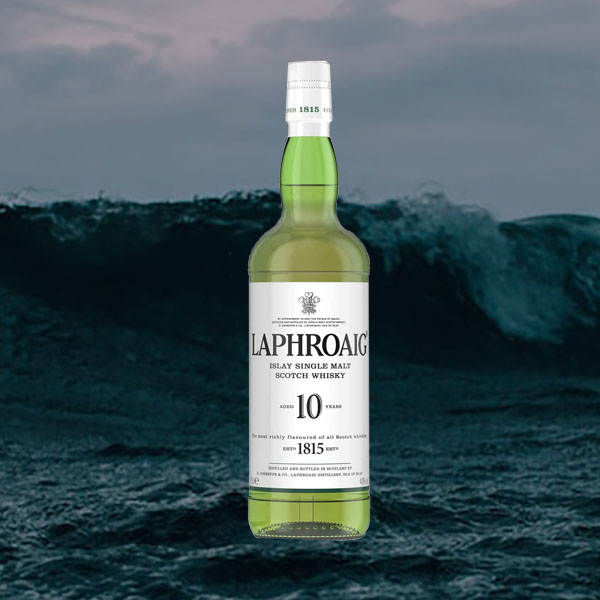
Laphroaig 10
Nose: Smoke, caramel, oak, coffee
Palate: Charred oak, smoke, chocolate, honey, iodine
Mouthfeel: Hot, thin, salty, ashy, medicinal
Finish: Smoke, caramel
Age: 10 years old
Cask/Barrels: Ex-bourbon casks
Strength: 86 proof / 43 ABV%
Price: £39 / $50
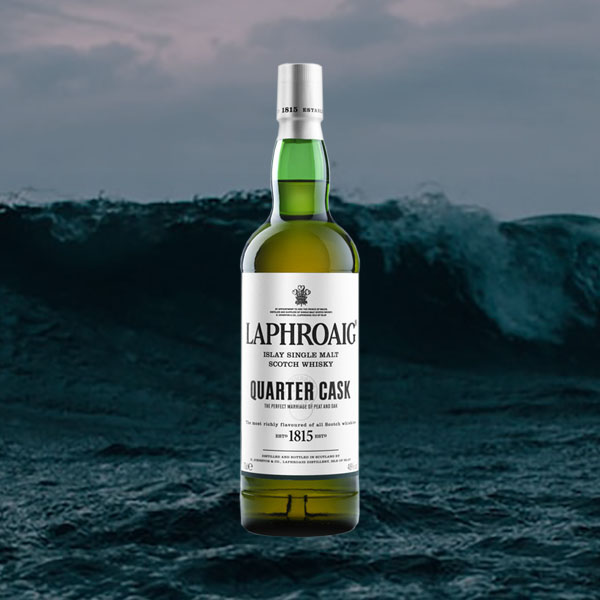
Laphroaig Quarter Cask
Nose: Smoke, ash, malt
Palate: Smoke, oak, coal, bacon, chocolate
Mouthfeel: Cinnamon, tobacco, burning charcoal
Finish: Long, caramel, smoke
Age: 5 years old
Cask/Barrels: Ex-bourbon barrels
Strength: 96 proof / 48 ABV%
Price: £41 / $51
Laphroaig 10 vs Quarter Cask: Laphroaig 10 Review
The bright golden color is most definitely appealing to the eyes. After 75 years, you can tell that Laphroaig has perfected the equation. The making of the whiskey sees a peat fire being used to dry malted barley. This peat is only found on Islay and the smoke from it is responsible for the rich flavor that you’ll come to experience.
In smelling the whiskey, you’ll get an immediately recognisable and fresh aroma. It’s youngish and heavily peated, but it’s also heavy in iodine or TCP-type smells, which is a trademark of the concoction. Additionally, you’ll get a breezy and coastal vibe, with a hint of something fruity underneath it all.
Someone likened it to oatmeal cakes done over an open fire and overcooked, which, all things considered, is a pretty apt description.
Though it’s a little strong for someone experiencing it for the first time, it isn’t too heavy on the palate at all. The oily, heavy feel that is synonymous with some other variations is nowhere to be found. Be that as it may, there is a spicy build that comes on fairly quickly, leading to a uniquely alluring mouthfeel.
The rich peat flavours make it strong and earthy, but that doesn’t stop it from being enjoyable and smooth. It’s all well complimented by a slight citrus sweetness, alongside some espresso coffee notes.
You’ll find the finish to be gently warming and pretty refreshing, and it will leave some level of spice on your palate, alongside your throat feeling whiffs of smoke. If you’ve been having whiskey for long enough, you’ll know that peat finishes are typically long, and even so, you could consider this among the ranks of shorter ones.
At 43% ABV, it’s meant to be easy to drink and light, however, if you are used to peat, then the flavour may be pretty strong for you. As I had mentioned before, if you are familiar with Talisker 10 or Ardbeg 10, then expect a similar experience here. Drinking is as simple as adding water.
When you swirl the Laphroaig 10, you will noticeably experience an industrial or chemical smell that’s akin to gasoline or burnt rubber. There is no going around the fact that it’s mildly unpleasant. While the other elements of the smell such as the citrus component are appealing, it’s hard to say that the chemical tone doesn’t take away from the overall aroma.
Given the overall pleasant experience, especially if you plan to make Laphroaig 10 a recurring part of your whisky adventures, the $49.97/£39 price tag is a pretty fair ask.
Laphroaig 10 vs Quarter Cask: Laphroaig Quarter Cask Review
If we’re talking about famous single malt whiskies from the Islay region, then, of course, the Laphroaig Quarter Cask has to be in the mix. A 5-year-old whiskey is used when the time comes for it to be moved to quarter casks for its finish. About seven months pass during the finishing stage, but even so, it’s still a pretty young whisky.
For reference, in the 19th century, quarter casks would have been used for whisky transport on horseback. They’re about 40 – 60 litres, and with such a size, the maturation process doesn’t carry on for an eternity. Of course, there is the longer wood contact mentioned above, which allows for accelerated ageing.
The aroma is pretty welcoming, starting things off with smoke and ash, and immediately followed by a more malty presentation. You can think of the Quarter Cask as the Laphroaig 10’s emboldened variation. There’s a pretty lively smell to dive into here, with notable notes of vanilla, sugar-coated barley, fruitcake, and brine.
It combines some very interesting attributes, being light and pretty smooth while still maintaining its smokiness and power. Much of this boils down to the proof which allows for a better texture and greater complexity.
Sure, its creation and composition are going to lead to a hard smoke and peat hit, but even so, the sheer amount of sweetness present prevents the Quarter Cask from coming off too harshly. Expect a pretty fiery and prickly feel on the palette, as well as a woody and salty kind of vibe.
There’s an alluring sparkling gold color Which is nothing short of visually perfect.
As far as the finish goes, it’s lingering and deep. Coming to the fore are notes of vanilla, Armagnac, and aniseed. Just as quickly as they come, they drown in a burnt wood and smokey swell. All of this ebbs away pretty slowly, and you probably wouldn’t have it any other way.
I would also say that the balance that the Quarter Cask offers is pretty impressive too. You have your typical Laphroaigian peat and smoke, and it’s layered well with a velvet coating and fruity sweetness. Sometimes, when contrast is done correctly, it allows for a more complimentary result than you would expect.
Drinking requires you to simply add water, and doing so makes the quarter cask undeniably smoother, softening the medicinal notes. The dram stays big and bold, and the ashy vibe comes to the fore.
As far as alternatives go, possibly the easiest to place is the Lagavulin 8. Even the cost is about the same. The Lagavulin 8 is also strong and smoky, but maintains a smooth and appealing taste.
Technically speaking, the Talisker 8 is also a pretty solid alternative, albeit one that gives off a little less smoke, which depending on your tastes, may be more appealing. The Talisker 8 is also bottled at cask strength, but it’s pretty smooth and many see it as an upgrade when compared to the Talisker 10.
Laphroaig 10 vs Quarter Cask: The Comparison
So far, I’ve talked about the Laphroaig 10 and the Quarter Cask as individuals. Now, I’ll bring it all together to help you decide.
First, let’s go over the different elements that we have spoken about so far, putting the two incredible whiskeys head-to-head.
We’ll start with the low-hanging fruit, which is the cost. The Laphroaig 10 is going to run you $49, while the Quarter Cask is going only going to cost you an extra $2, standing at $51. If you do an apples-to-apples comparison, then the former is the more cost-effective of the two.
Be that as it may, many would say that the Quarter Cask is higher in smoke than its counterpart and has a high-risk and high-reward flavour profile. These are things that will appeal to some whisky drinkers, and if you fall on that side of the fence.
As far as alcohol content goes, you can see that the Quarter Cask has the greater proportion of the two. So, you can expect to find it to be a little more jarring.
From the nose perspective, while the Quarter Cask is more on the toffee and smoky caramel side, the 10-year variation has more of a seaweed vibe.
Don’t forget though that the Laphroaig 10 will probably hit you right out of the box with a smell that is akin to burnt rubber. Honestly, as pleasant as the rest of the aroma profile is, you may find that this chemical note can make it pretty off-putting. With that said, the Quarter Cask has to get the win in this department.
Next, we can talk about how peaty and full-bodied both of them are. Honestly, the difference is negligible at best, with both variations doing a pretty bang-up job here. If you prefer a little bit more of a spicy flavour profile, then the Quarter Cask may be the way to go. You’ll find the Laphroaig 10 to be on the sweeter side though.
Bear in mind that with water added (which is the way you’re meant to enjoy these whiskies), the Quarter Cask does sweeten a bit, but it comes with a certain level of saltiness, which may or may not be to your liking.
While the 10-year variation is a lot easier to drink once you have acclimatized to it, you will probably find the Quarter Cask a little easier to get off the ground with. However, if you are willing to put in the commitment and take the Laphroaig 10 seriously, then it will most certainly reward you down the road.
So, while the fullness and peatiness are respectable on both sides, these little nuances can help you to decide based on what appeals to your tastes.
As far as the finish goes, the Laphroaig 10 gives you a pretty classic Islay malt kind of vibe. If peat is something that you are used to, then expect a strong flavour. Apart from that, it’s easy to drink and very light, and compared to other peat finishes, this is one of the shorter ones.
The Quarter Cask’s finish is warm and upfront. You’ll get a flavour punch, but it trails off relatively quickly. However, peat smoke and oils stick around for a bit longer, with the end being characterised by oak cask notes.
If you want something that kicks in strongly off the bat, then the Quarter Cask is for you. The 10-year-old variation has a little bit more balance, but even so, it doesn’t overstay its welcome.
Laphroaig 10 vs Quarter Cask: Final Thoughts
Let’s bring things full circle here. I’ve been going over the different attributes of the two contenders and letting you know where you may prefer one or the other. However, I’m pretty sure you want to hear my thoughts and preferences on the matter.
I’m going to start by scoring the Laphroaig 10 and Laphroaig Quarter Cask based on five different criteria. The total score will tell you what my preference is, but I’ll take some time to explain my reasoning in detail.
Author’s pick
| Best | Laphroaig 10 | Laphroaig Quarter Cask |
| Colour | 10/10 | 10/10 |
| Aroma/Nose | 5/10 | 8/10 |
| Mouthfeel | 7/10 | 8/10 |
| Taste/Palate | 8/10 | 8/10 |
| Finish | 7/10 | 5/10 |
| Total | 37 | 39 |
Yes, it turns out the Laphroaig Quarter Cask is the winner here. However, these numbers sum up my feelings about the two very aptly. For the most part, I don’t feel too differently about them, but there are a couple of areas in which one does way better than the other.
Starting with the colour, I love both equally. Put simply, they’re both effectively bright gold, and that kind of visual has always been pleasing to me.
You probably expected the Laphroaig 10 to lose in the aroma department. If you feel differently than I do, you’re entitled to your opinion, but I simply cannot deal with my whisky smelling like the inside of a factory. It’s not attractive no matter which way I slice it. Sure, there are other elements of the aroma that are appealing, but the burnt rubber smell is jarring.
The Quarter Cask gives me a sweeter aroma, it’s less overly saline, and overall, livelier to smell.
I don’t necessarily feel too strongly about the mouthfeel one way or the other, but the Quarter Cask does have that slightly oily presence that I like. Therefore, I think it gets a little bit of an edge for that reason.
As far as the taste goes, I put them on the same level, though they appeal to me for different reasons. Laphroaig 10 is fairly light, and I like the way it bills up to its spices. The strong and earthy flavours are great, but at the same time, it remains enjoyable and reasonable reasonably smooth. Of course, there are also citrus and espresso notes that are the icing on the cake.
The Quarter Cask has fuller oils, which I like, yet it still maintains a medium and fairly creamy feel. You get a quicker spice build here, and the peat smoke that gives me that little tingle on my tongue compliments it all pretty well. I would also say that the earth notes here are slightly more genuine.
The Laphroaig 10 gets an edge in the finishing department because I prefer more balanced finishes and those that are a little more consistent throughout. There Quarter Cask’s finish is not necessarily bad, but it hits so quickly, and as fast as it comes on, it’s effectively gone.
So, with all of that in mind, I do have to see that the Laphroaig Quarter Cask is the slight winner here. Especially as someone that prefers a little bit more alcohol content in my whisky.



